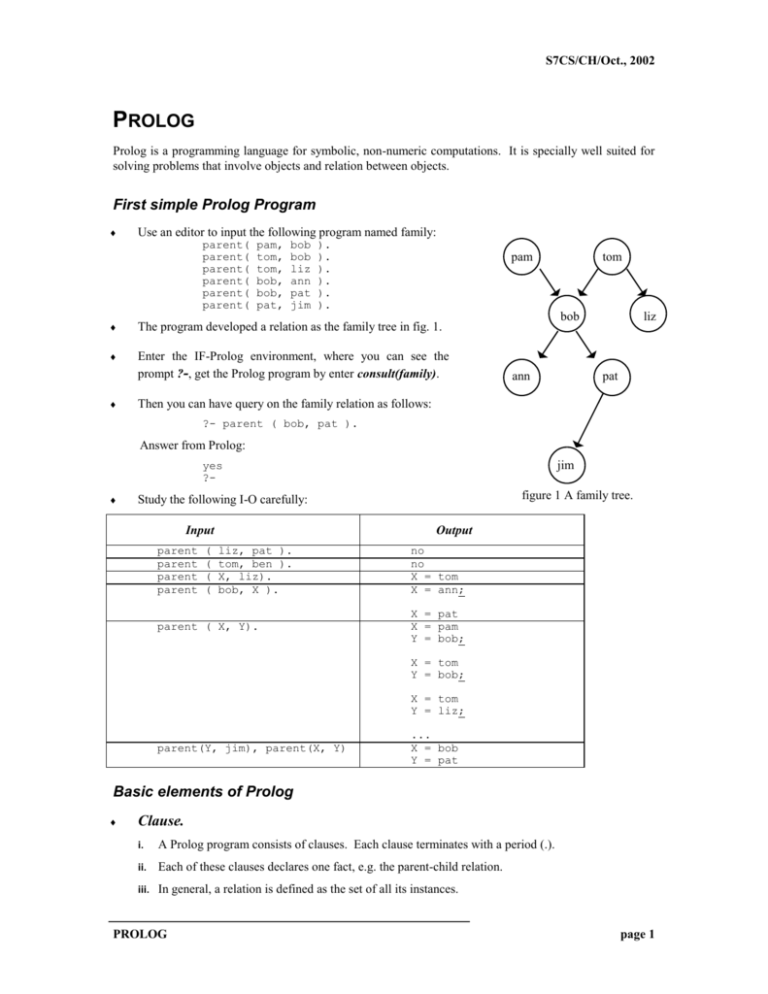

have no free variables) when attempting to satisfy this goal. Not-equals(X, Y) should succeed if X is not equal to Y, and fail if it is X and Y should be bound to ground expressions (i.e. Not-equals(X, Y) :- equals(X, Y), !, fail. An example is the definition of not-equals: equals(X, X).

If, however, the proof of R fails, rather than backtrack and try to re-prove H, the presence of the cut causes the goal g to fail immediately this occurs even if there are further clauses that might apply to g.

If the proof of R succeeds, then g is proven in this case, the cut has no part to play. Suppose this clause is chosen to satisfy a goal g with which G unifies. Specifically, the cut is written as an exclamation mark (!) occurring as a goal in the right-hand side of a clause such as: G :- H, !, R. The cut is a way of giving the programmer additional control over the computation by allowing him to indicate places where backtracking is impermissible. Now let’s run the code.Reading Samuel Kamin's book on chapter 8, prolog, I found this solution that also fits here and explains how to use the cut: Step 3 − Now create one file (extension is *.pl) and write the code as follows − main :- write('This is sample Prolog program'),write(' This program is written into hello_ file'). The editor shows sample boilerplate code when you choose language as Prolog and start coding. Getting started with the OneCompiler's Prolog editor is easy and fast. It's one of the robust, feature-rich online compilers for Prolog language. Now we can see in the prolog console, it shows that we have successfully changed the directory. Write, Run & Share Prolog code online using OneCompiler's Prolog online compiler for free. Step 2 − Select the proper folder and press OK. Step 1 − From the prolog console, go to File > Change Dir, then click on that menu. Now let us see how to run the Prolog script file (extension is *.pl) into the Prolog console.īefore running *.pl file, we must store the file into the directory where the GNU prolog console is pointing, otherwise just change the directory by the following steps − The corresponding output will be as shown below − Note − After each line, you have to use one period (.) symbol to show that the line has ended. To do so, we have to write the command as follows − write('Hello World'). Hello World ProgramĪfter running the GNU prolog, we can write hello world program directly from the console. Now, we will see how to write a simple Hello World program in our Prolog environment. In the previous section, we have seen how to install GNU Prolog.


 0 kommentar(er)
0 kommentar(er)
